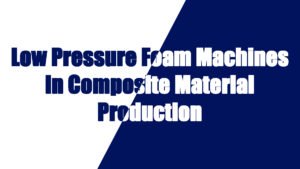In the home furnishing industry, in addition to polyurethane, other materials are widely used, such as natural latex, cotton, down, fiberboard, metal, wood, etc. Since the materials used for different applications in the home furnishing industry are quite different, this article will compare the performance, cost, environmental protection, etc. of polyurethane and other materials by application.
Here’s a quick table outlining the key features of polyurethane compared to other common mattress and pillow filling materials (natural latex, memory foam, down):
Features/Materials | Polyurethane foam | Memory foam | Natural latex | Down | Polyester fiber |
Comfort | Good comfort, suitable for most consumers | Extremely comfortable, providing pressure dispersion and uniform support | Very comfortable, providing good elasticity and support | Super soft, suitable for consumers who like soft comfort | Average comfort, suitable for consumers with limited budget |
پشتیبانی کنید | Moderate, good support, suitable for general needs | Excellent, can provide personalized support according to the human body curve | Excellent, maintain the natural curve of the spine, strong support | Weak, mainly provide softness, poor support | Average, suitable for daily use but lack of lasting support |
Breathability | Average, poor breathability, easy to accumulate heat | Poor, easy to accumulate heat and moisture | Excellent, good breathability, suitable for summer and high temperature areas | Very good, excellent breathability and temperature control function | Good, moderate breathability |
Durability | Moderate, easy to deform over time | Excellent, durable and not easy to deform | Very durable, long service life | Poor, easy to be compressed by moisture, short service life | Low, easy to wear, not as durable as other materials |
Environmental protection | Poor, some low-quality products contain harmful substances | Poor, low quality may contain VOC | Very good, natural materials, antibacterial and anti-allergic | Good, natural materials, suitable for environmentally friendly consumers | Generally, some low-quality products may not be environmentally friendly |
Price | Low price, suitable for mass market | Higher price, suitable for high-end market | Higher price, suitable for high-end market | High price, luxury market, suitable for consumers with higher budget | Cheap price, suitable for consumers with limited budget |
Suitable group | Suitable for low-end and mid-end market, those with basic needs for comfort | Suitable for consumers who pursue high comfort and healthy sleep | Suitable for consumers who pay attention to health and environmental protection | Suitable for high-end consumers, those who like extremely soft comfort | Suitable for consumers with limited budget |
Analysis of Different Materials Used in Pillows
The main materials for pillow fillings include memory foam, down, polyurethane, natural latex, cotton, polyester fiber, etc. As people’s health awareness increases, the choice of pillow fillings is becoming more and more diverse, especially in terms of comfort, support and antibacterial properties.
Global Pillow Market
According to a report by Market Research Future, the global pillow market is expected to grow from US$14 billion in 2023 to US$20 billion in 2030, with an average annual growth rate of 5.5%. This growth is mainly driven by consumers’ attention to healthy sleep and the rising demand for high-quality sleep products.
The market share of various pillow filling materials is:
Memory foam: Memory foam pillows account for about 35% of the global market. By providing customized support and pressure dispersion, it has become the preferred filling material for consumers with high comfort requirements.
Down: Down-filled pillows account for about 25%. Down is favored by the high-end market for its ultra-soft comfort, but due to its high price, its market share is not as good as memory foam.
Natural latex: Natural latex pillows account for about 20% of the market. Natural latex is especially popular among health-conscious consumers because of its environmental protection, breathability and support.
Polyester fiber: Polyester fiber pillows account for about 15% of the market. It is cheap and moderately comfortable, and is widely used in low-priced pillow products.
Others (such as cotton, wool, etc.): about 5%.
Pillow Fill Material Performance Comparison
Performance | Memory Foam | Latex | Down | Feathers | Polyester Fiber | Water Pillow | Hollow Fiber |
Density (kg/m³) | 40-80 | 60-90 | – | – | 20-35 | – | 20-40 |
Comfort (Firmness, Compression Coefficient) | 20-50 (Medium) | 50-80 (Firm) | 5-10 (Very Soft) | 10-20 (Soft) | 30-40 (Medium) | 20-40 (Adjustable) | 25-35 |
Breathability (L/m²/s) | 0.3-0.6 | 2.0-3.5 | 1.5-2.5 | 1.2-2.0 | 0.5-0.8 | 0.7-1.0 | 0.8-1.5 |
Durability (Years) | 3-5 years | 10-20 years | 2-3 years | 3-5 years | 1-2 years | 3-5 years | 3-6 years |
Cleaning Difficulty | ★★☆☆☆ (Needs regular cleaning and ventilation) | ★★★☆☆ (Hand wash) | ★★★☆☆ (Dry clean or cautious washing) | ★★★☆☆ (Dry clean) | ★★★★☆ (Machine washable) | ★☆☆☆☆ (Be cautious with water) | ★★★☆☆ (Machine washable) |
Price Range (CNY) | ¥150 – ¥1000 | ¥300 – ¥2000 | ¥500 – ¥4000 | ¥300 – ¥1500 | ¥50 – ¥500 | ¥200 – ¥800 | ¥100 – ¥800 |
Ideal User | Those needing support and comfort | Those who prefer firm support and natural materials | Those preferring softness and breathability | Those liking traditional soft pillows | Budget-conscious or those who need easy cleaning | Those needing adjustable firmness or prefer water-based pillows | Budget-conscious, prefer breathability |
Each pillow filling material has distinct advantages, and the best choice depends on your specific needs:
- If you need strong support and durability, Latexis the best choice.
- For those seeking softness and comfort, Downis ideal, though it’s more expensive.
- Memory Foamoffers excellent pressure relief but may trap heat, making it ideal for colder environments or those who prefer firmer support.
- Feathersprovide a traditional soft pillow experience with moderate support.
- Polyester Fiberو Hollow Fiber are cost-effective options with decent comfort and breathability, suitable for those on a budget.
- Water Pillowsoffer adjustable firmness, making them great for those who want a customizable sleeping experience.
Analysis of Different Materials Used in Sofa
Sofa fillings usually include polyurethane foam, down, natural latex, polyester fiber, etc. These materials affect the comfort, durability, appearance and price of the sofa.
Global Sofa Market
According to Grand View Research, the global sofa market is valued at approximately US$150 billion in 2023 and is expected to reach US$220 billion by 2030, with an average annual growth rate of approximately 5.3%. This growth is mainly driven by consumers’ rising demand for high-quality, customized sofas and people’s attention to comfort and health.
The market share of various sofa filling materials is:
Polyurethane foam: Polyurethane foam sofa filling accounts for up to 40% of the global market. It provides good comfort and support, is moderately priced, and is widely used in the mid- and low-end markets.
Down: Down-filled sofas account for about 15% of the high-end market. Down-filled sofas usually provide extreme softness and comfort, suitable for high-end consumers.
Memory foam: Memory foam sofas account for 12% of the market. Although its price is higher, it is gradually favored by the high-end market because of the personalized support and comfort it provides.
Natural latex: Sofas filled with natural latex account for about 10%. Due to the environmental friendliness and good support of natural latex, it is favored by consumers with strong environmental awareness.
Polyester fiber: Polyester fiber-filled sofas account for about 15%. As a low-cost material, it is often used in sofas in the mass market.
Others (such as cotton, wool, etc.): about 8%.
Sofa Fill Material Performance Comparison
Here is a detailed comparison of common sofa filling materials in English, including specific data on each performance metric such as density, comfort, breathability, durability, cleaning difficulty, and price.
Performance | Foam | Down | Feathers | Memory Foam | Springs | Polyester Fiber | Natural Latex |
Density (kg/m³) | 25-55 | 15-25 | 20-40 | 40-85 | – | 20-35 | 60-90 |
Comfort (Firmness) | Medium to firm (20-40) | Very soft (5-10) | Soft (10-20) | Medium to firm (30-50) | Firm (50-70) | Medium (25-40) | Firm to medium (50-80) |
Breathability (L/m²/s) | 0.3-0.7 | 1.5-2.5 | 1.0-2.0 | 0.3-0.6 | 1.0-2.0 | 0.5-0.8 | 2.0-3.5 |
Durability (Years) | 5-8 years | 2-3 years | 3-5 years | 3-5 years | 5-10 years | 1-2 years | 10-20 years |
Cleaning Difficulty | ★★★☆☆ (Needs regular cleaning) | ★★☆☆☆ (Dry clean or professional cleaning) | ★★☆☆☆ (Dry clean or professional cleaning) | ★★★☆☆ (Needs regular cleaning) | ★★★★☆ (Requires regular maintenance) | ★★★☆☆ (Machine washable) | ★★★☆☆ (Requires professional cleaning) |
Price Range (CNY) | ¥100 – ¥1000 | ¥1000 – ¥4000 | ¥300 – ¥1500 | ¥200 – ¥3000 | ¥500 – ¥2000 | ¥50 – ¥500 | ¥500 – ¥3000 |
Ideal User | Budget-conscious with a need for firm support | Those seeking softness and willing to pay more | Those preferring a traditional soft feel | Those seeking a balance of comfort and support | Those needing firm support and durability | Budget-conscious, prefers lighter material | Those seeking natural materials and long-term comfort |
Each filling material has distinct advantages, and the best choice depends on your specific needs:
- Foam: Ideal for those looking for firm support on a budget.
- Downو Feathers: Perfect for those who prioritize softness and comfort and are willing to spend more for luxury.
- Memory Foam: Great for those needing a balance between comfort and support.
- Springs: Excellent for users who need firm and durable support.
- Polyester Fiber: Best for budget-conscious users or those who want a lightweight, easy-to-clean option.
- Natural Latex: Suitable for users who pursue natural materials and value long-term comfort.
Analysis of Different Materials Used in Mattress
Mattresses are one of the products in the home furnishing industry that have the most stringent requirements for fillings. Common mattress filling materials include polyurethane foam, memory foam, natural latex, springs, cotton, wool, etc. As people pay more attention to sleep quality, the mattress filling market has gradually developed towards health, environmental protection, and comfort.
Global Mattress Market
Polyurethane foam: Polyurethane foam mattresses account for about 30% of the market. Because of their affordable price and good comfort, polyurethane foam mattresses are widely used in the low-end and mid-end markets.
Memory foam: Memory foam mattresses account for about 25% of the market. Due to their pressure dispersion and comfort, memory foam mattresses are very popular in the mid-to-high-end market.
Natural latex: Natural latex mattresses account for about 18% of the market share. Natural latex mattresses are gradually favored by healthy consumers and high-end markets because of their environmental protection, breathability and support.
Spring mattresses: Spring mattresses account for about 20% of the market share, especially in traditional markets, because of their good support and price advantages, they still occupy a large share.
Cotton and wool: Mattresses made of natural materials such as cotton and wool account for about 7% of the market share. They are usually used as the outer layer of the mattress to provide comfort and breathability.
Others: about 5%, including some emerging materials or special fillers.
Mattress Fill Material Performance Comparison
Here is a comparison of various mattress filling materials, including specific data on performance characteristics such as density, comfort, breathability, durability, cleaning difficulty, and price. This table provides an overview to help guide your decision when selecting a mattress based on your preferences.
Performance | Memory Foam | Innerspring | Latex | Hybrid (Memory Foam + Springs) | Polyester Fiber | Gel Memory Foam | Viscoelastic Foam |
Density (kg/m³) | 40-85 | 25-40 | 60-90 | 40-80 | 20-30 | 40-70 | 40-60 |
Comfort (Firmness) | Soft to Firm (20-60) | Medium to Firm (30-60) | Medium to Firm (40-80) | Soft to Firm (30-60) | Soft to Medium (20-30) | Medium to Firm (40-60) | Soft to Medium (30-50) |
Breathability (L/m²/s) | 0.3-0.6 | 1.0-2.5 | 1.5-2.5 | 0.5-1.5 | 0.5-1.0 | 1.0-1.5 | 0.3-0.7 |
Durability (Years) | 5-8 years | 5-10 years | 10-20 years | 8-12 years | 2-5 years | 5-8 years | 5-8 years |
Cleaning Difficulty | ★★★☆☆ (Spot cleaning) | ★★☆☆☆ (Professional cleaning) | ★★★☆☆ (Spot cleaning) | ★★★☆☆ (Spot cleaning) | ★★★☆☆ (Machine washable) | ★★★☆☆ (Spot cleaning) | ★★★☆☆ (Spot cleaning) |
Price Range (CNY) | ¥1000 – ¥8000 | ¥1000 – ¥5000 | ¥1500 – ¥10000 | ¥2000 – ¥10000 | ¥300 – ¥1500 | ¥2000 – ¥8000 | ¥1500 – ¥6000 |
Ideal User | Those seeking pressure relief | Those preferring firm support | Those seeking natural materials | Those wanting both comfort & support | Budget-conscious users | Those preferring cooling features | Those needing responsive support |
When choosing a mattress fill material, consider the following:
- Memory Foam: Ideal for those seeking pressure relief and contouring support but may not be suitable for hot sleepers due to its heat retention.
- Innerspring: Best for those who need firm support and breathability, with a lower price point.
- Latex: Excellent for long-term durability, natural materials, and breathability, but at a higher price point.
- Hybrid: Provides a balanced combination of comfort and support, suitable for those who want the best of both worlds.
- Polyester Fiber: Great for budget-conscious users, offering a lightweight and soft feel, but with limited durability.
- Gel Memory Foam: Best for hot sleepers who want memory foam benefits with additional cooling properties.
- Viscoelastic Foam: A good alternative to memory foam, offering responsive support with less heat retention.
نتیجه گیری
Polyurethane (PU) filling material is an ideal choice, especially for consumers who seek a balance between cost-effectiveness, comfort and durability. It is suitable for a variety of furniture and household items, easy to clean and maintain, and suitable for daily family use. Although it is not as environmentally friendly as natural latex, its recyclability and gradually optimized production process make it an environmentally friendly and practical choice in the market. For consumers with limited budgets but still pay attention to comfort, polyurethane is undoubtedly a filling material worth considering.
UREXCEED is a professional polyurethane equipment factory. If you want to produce polyurethane products for any furniture industry, please contact us. We will provide you with the most advanced foaming machines, the most comprehensive solutions, and the most efficient services.



































